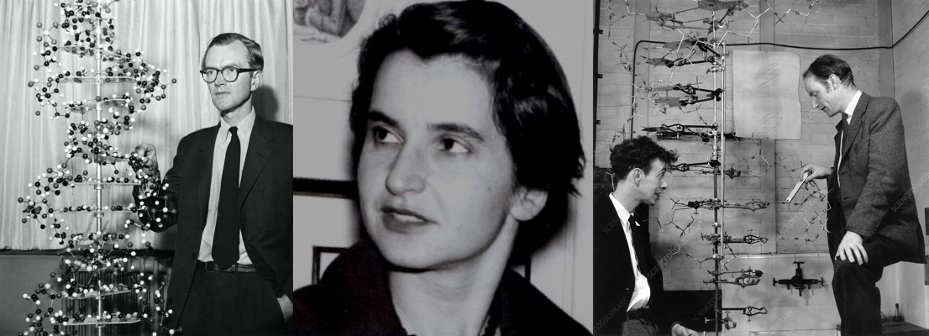
13 Jul THE TRUE DISCOVERER OF THE DNA STRUCTURE
One of the most important scientific discoveries of the past century, the unravelling of the structure of our blueprint (DNA), was not made overnight. Important pieces of work, which can be traced all the way back to 1800s, provided crucial steps and stepping stones towards the final discovery of the double-stranded structure of DNA that culminated officially in 1953.
Rosalind Franklin, a scientist born to Jewish parents in 1920 in London, joined King’s College London in 1951 after having received her PhD in the field of Chemistry at the University of Cambridge; a great achievement given the timeframe of this accomplishment. At King’s College London she was going to use X-ray techniques to study the structure of DNA, one of the hottest topics in science back then.
Around the end of 1940s, sir John Randall at King’s College London (leading the team working on the structure of DNA in London) assigned the PhD student Raymond Gosling to work on the problem of the structure of DNA (and specifically on X-ray diffraction) together with the scientist Maurice Wilkins. Randall was convinced that DNA was the material which transmitted the genetic code to the next generation. After the initial work producing the first X-ray diffraction of DNA, Randall reassigned the PhD student Gosling to work with the freshly-hired Rosalind Franklin (most likely) without communicating this with Wilkins. This might had contributed to the animosity between the two.
During the next two years, the PhD student Gosling and the researcher Franklin worked together to perfect the technique of X-ray diffraction photography of DNA and obtained the sharpest diffraction images of DNA at the time. Together they produced the first X-ray diffraction photographs of the ‘wet form B’ (B-DNA) – paracrystalline arrays of highly hydrated DNA – and in 1952 Franklin and Gosling obtained the best X-ray diffraction image of DNA known as ‘Photo 51’.
Without Franklin’s knowledge, Wilkins shared this photo (Photo 51) with the scientists James Watson and Francis Crick who worked back then in another lab at the University of Cambridge. Exactly this piece of evidence was proven crucial for building upon data Watson and Crick already had and helping the two decipher the correct chemical structure of DNA. Watson and Crick published their model in April 1953, while Franklin and Gosling had also just finished their calculations and submitted their manuscript for publication too. The journal published the two scientific papers at the same time but put Franklin’s paper last, making it look like her (and Gosling’s) experiments just confirmed Watson’s and Crick’s breakthrough. In 1962, only Crick, Watson and Wilkins received and shared the Nobel Prize for this discovery of DNA structure.
There are many stories behind Franklin’s unfair treatment and a hostile academic culture towards female scientists back then. What I can say as a scientist myself, is that science – as opposed to a widespread view – is a teamwork and big findings happen neither overnight nor are they a result of one person’s work. Every little piece of evidence serves as the basis for the next piece and after years of research (usually decades or even centuries) some scientists, who happen to work on a given subject, manage to finally receive the last pieces and put the ‘puzzle’ together.
We should therefore be grateful and acknowledge the work done already in the late 1860s by the Swiss chemist Friedrich Miescher, the American Phoebus Levene and Erwin Chargaff, who revealed more details about the DNA molecule in the decades following, as well as by many other researches and PhD students whose names might have not even been recorded. Without the scientific foundation provided by all these scientists, Watson, Crick, Franklin and Wilkins may had never reached their groundbreaking conclusion of 1953: that the DNA molecule exists in the form of a three-dimensional double helix.



Sorry, the comment form is closed at this time.